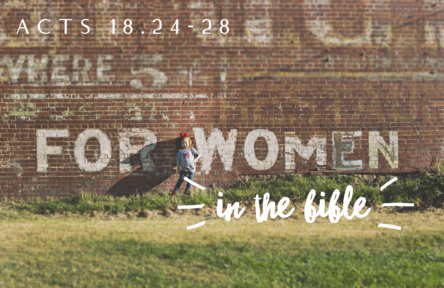Bracketology II: Women In The Bible
Notes
Transcript
Sermon Tone Analysis
A
D
F
J
S
Emotion
A
C
T
Language
O
C
E
A
E
Social
THE POINT: Perspective Matters as we understand ourselves in the text.
- Different people have looked through the text to guess how many named people are in it
- 166-205 are women
- 1122-1386 total named people in the text
- So, our range of women represented in the Bible goes from 11.9% at worst to 18.2% at best.
- And if you figure that we’ve roughly been 50-50 throughout history, that’s an underrepresentation of anywhere from 31.8-38.1%
- How do you fill a vacancy of underrepresentation? It becomes harder to see yourself in a text where you’re hardly mentioned.
- How we fill the vacuum
- Experts can tell us how women are supposed to be viewed.
- This can be a problem when the people who tell you what to believe aren’t able to have dialogue, and only fill the space with one type of voice.
- SBL: 24% of biblical scholars are women.
- PCUSA: 38% of active pastors are women.
- When you have those types of disparities at times, it can be easy to become an echo chamber.
- Places where there is some information take up greater space.
- I think of passages like Ephesians 5. The energy gets places on wives submitting to husbands.
- Nevermind the rest of the passage. Nevermind the culture surrounding Ephesians and what it might have meant to love someone and not treat them as chattel.
- So Eph 5 takes up greater space
- Or we take what we have to fill the space, especially in light of the previous two points.
- Daughters of Eve.
- After awhile, that’s all we see. Those narratives that sought to fill the space have done it, and it’s always the way things have been. And there’s power in knowledge and control of a narrative.
- Text like today’s doesn’t get examined much, unless we’re willing to argue that a particular human narrative can’t have full control on the wisdom of God’s text.
- Typically, we’d notice Apollos and consider him the primary point of the story.
- But we see more that he doesn’t seem to have the message right. He’s not really the hero here.
- Instead, it’s Pricilla and Aquilla.
- Pricilla comes first here, not her husband. She’s of higher rank.
- Paul calls her a “fellow-laborer” (synergos) in the work of the church.
- Luke tells of Pricilla as an envoy, and important pillar that the church was built upon.
- And, Pricilla teaches.
- It’s not Apollos that drives this story. It’s Pricilla and Aquilla that do. And Pricilla is leading the charge.
- If we strip out the noise that has filled the vacuum, we begin to see how over and over again, women drive the narratives of the text.
- Rahab drives the story in Joshua by protecting the spies.
- Ruth helps us understand David
- Esther drives the narrative to save the Jews
- Mary nudges Jesus on to perform his first miracle
- The women at the tomb are the first to witness Jesus’ resurrection.
- Each of these women are driving the story of God’s faithfulness forward. In different ways.
- As a result, our understanding might be more nuanced, more rich. Less inconsistent.
- We should pay attention to how God calls all of us and be aware when a story wants to fill a vacuum.
- Isn’t that what Jesus did, after all? Invited the people whose story isn’t told and had them sit and break bread.
- And it’s the same for women as it is for other stories.
